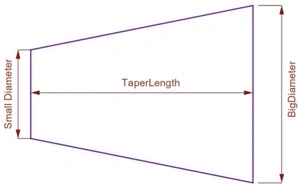Taper calculation in a lathe machine is essential for machining conical surfaces, ensuring precise fits for components like spindles, tool holders, and shafts. A taper is a gradual reduction or increase in diameter along the length of a workpiece. It is widely used in engineering applications for self-locking, alignment, and easy assembly of parts.
Importance of Taper Calculation
Precision Fitting – Ensures accurate fits between machine components, such as Morse tapers in drill machines and lathe spindles.
Improved Load Distribution – Reduces stress concentration and enhances component strength.
Ease of Assembly & Disassembly – Provides self-locking properties, reducing the need for fasteners.
Standardization – Enables compatibility with various machine tools and accessories.
Applications of Taper in Lathe Machines
Tailstock Sleeves – Used to hold drilling tools with Morse tapers.
Machine Tool Spindles – Ensures firm gripping of cutting tools.
Pipe Fittings – Provides leak-proof joints in mechanical systems.
Automobile Components – Used in shafts, axles, and steering mechanisms.
Taper calculation in lathe machining is crucial for accurate component design and assembly. By using this application , machinists can achieve precision, efficiency, and compatibility in mechanical engineering applications.
Lathe Machine Taper
Calculation
Big Diameter:
Small Diameter:
Taper Length:
- Submit
- Clear
- Back
- Go to Demo

Job Angle: